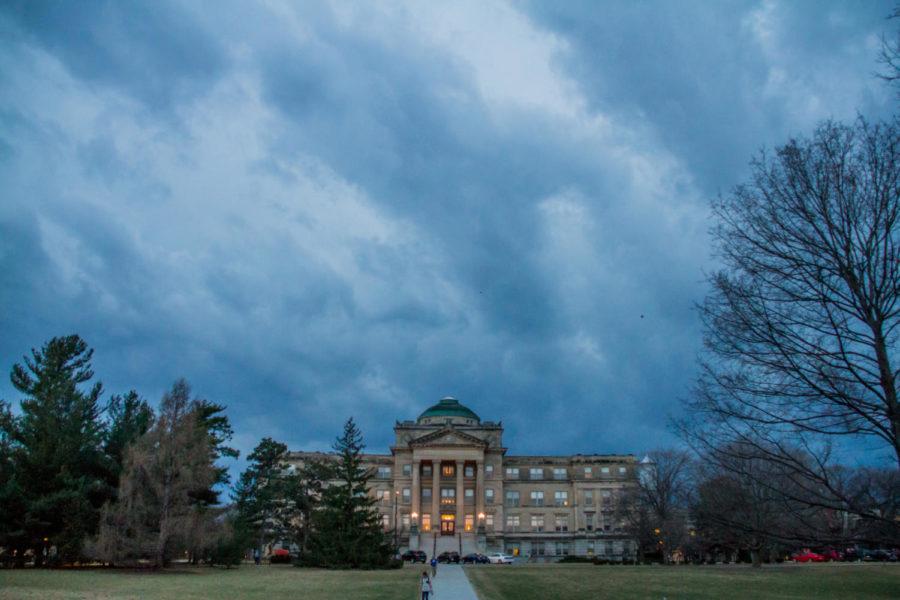Iowa faces raise in humidity
Storm clouds roll through campus during the late afternoon of March 6. The storm hit around 6:30 p.m, after a day of wind warnings and tornado watches.
September 10, 2017
Over the past 40 years, temperature has been increasing in Iowa. With the rising temperatures, humidity has increased alongside it.
This issue of increasing humidity was addressed in this year’s climate statement, dubbed “It’s not just the heat, it’s the humidity!”
Released on Aug. 9, Gene Takle, director of Iowa State’s climate science program and a professor of geological and atmospheric sciences, and Betsy Stone, associate professor of biochemical and chemical engineering at the University of Iowa, were the main authors of this year’s installment.
The climate statement addresses climate change as a whole every year, but covers a specific aspect of it each time.
“One of the goals is to make it a regular item to keep the issue out there, but have a different issue of it covered,” said Dr. William Gutowski, professor of meteorology and associate dean of the college of liberal arts and sciences.
Gutowski is one of the 193 professors, researchers, and faculty who signed the statement.
This increase is not a sudden discovery. According to the Climate Statement, absolute humidity raised in Dubuque during springtime by 23 percent from 1971 to 2017.
It may seem insignificant, but humidity can do more than just be a daily inconvenience. There are serious health risks that can occur.
“Increased levels of humidity create hazardous conditions for Iowa workers and sensitive populations through the danger of heat exhaustion and heatstroke,” Takle said. “Asthma is worsened by higher levels of allergens in the air and the cost of air conditioning homes and businesses to maintain comfort levels increases.”
In addition to the health risks, the threat of floods and heavier rains is also a major consequence of excess humidity.
“If you have substantially more water in the atmosphere, there’s more that can fall out as rain, so it can contribute to heavier flooding,” Gutowski said.
Not only does this humidity have an impact on the residents of Iowa, but it also affects agriculture.
“For Iowa’s agriculture, increased warm‐season humidity leads to waterlogged soils during planting season, rising humidity also leads to longer dew periods and higher moisture conditions that elevate costs of drying grain,” Takle said. “Increased nighttime temperatures coupled with humidity causes stress to crops, livestock and pets.”
Gutowski also discussed about the impact on agriculture. He spoke about how as long as their isn’t too much moisture, it will be fine for agriculture.
“It’s not necessarily all bad, but it is a change. And when people are adapted to a certain environment climatic situation and to changes, and that means there needs to be further adaptations, and the changes might not be for the better,” Gutowski said.
Humidity is often overlooked in the conversation about climate change.
“We must all do more to mitigate the effects of climate change, by curtailing emissions of heat‐trapping gases, improving energy efficiency, and increasing use of clean and renewable energy,” Stone said.
Looking ahead, these trends don’t seem to change any time soon.
“Long term temperatures will continue to go up, and we will continue to get more humidity in the atmosphere as a consequence,” Gutowski said.







